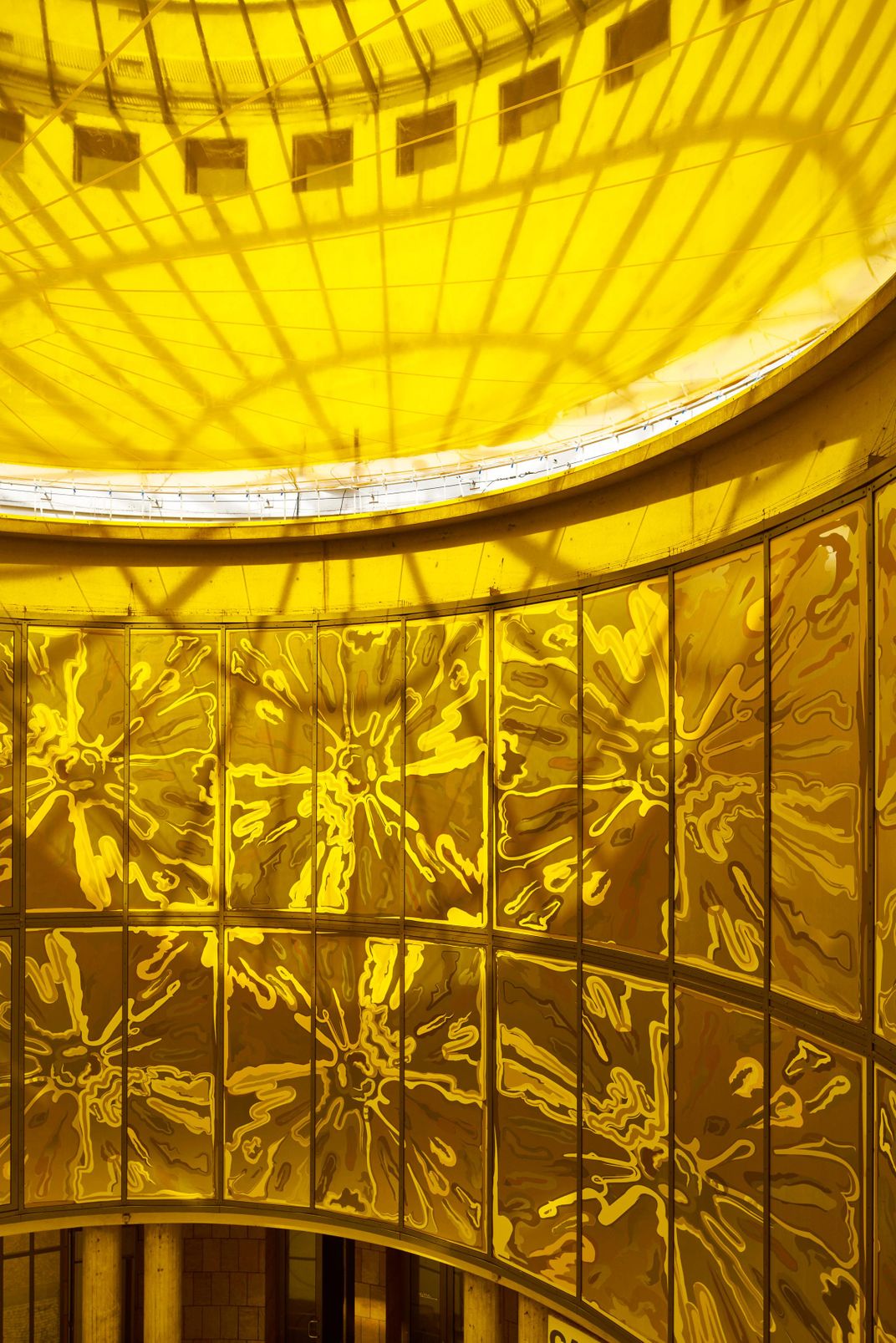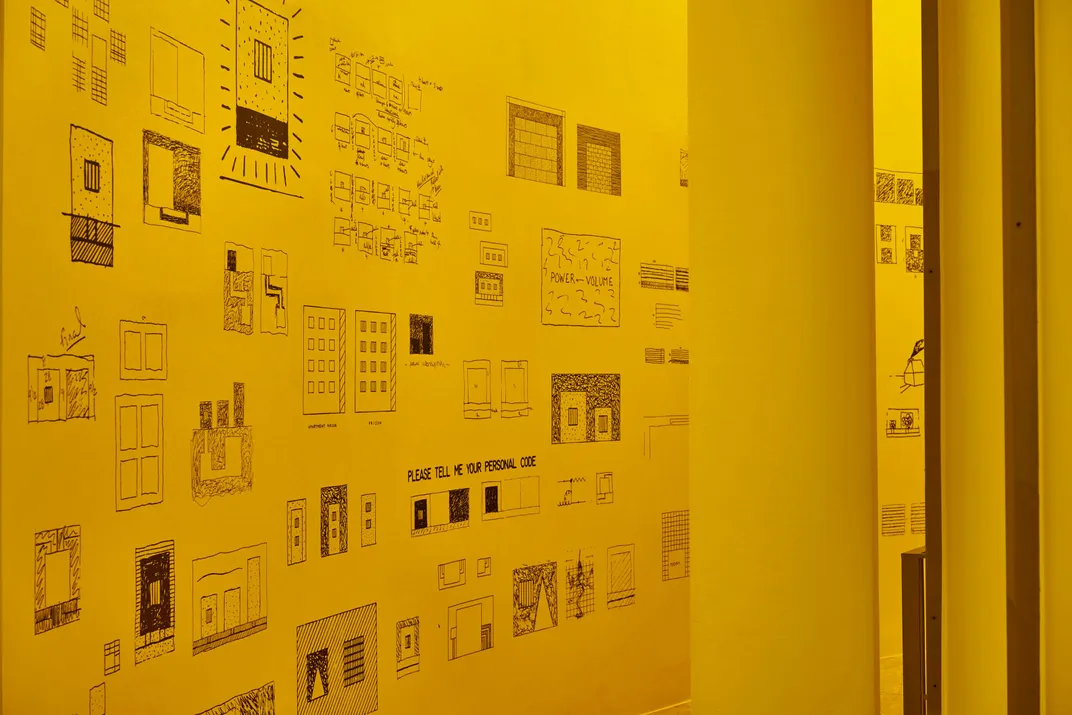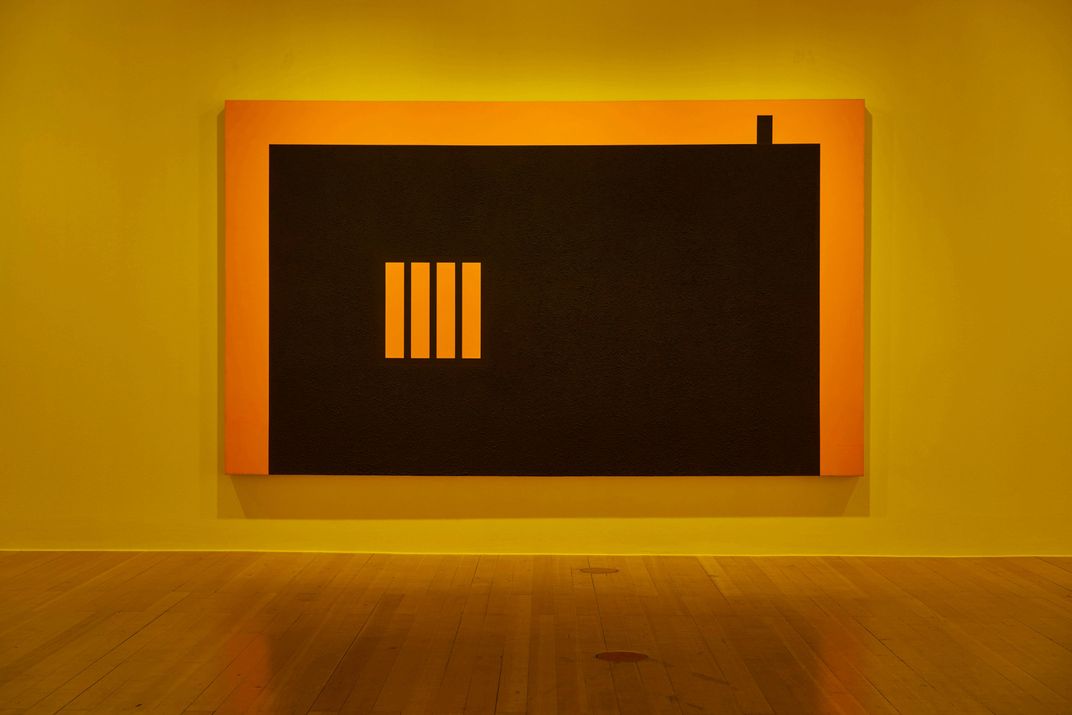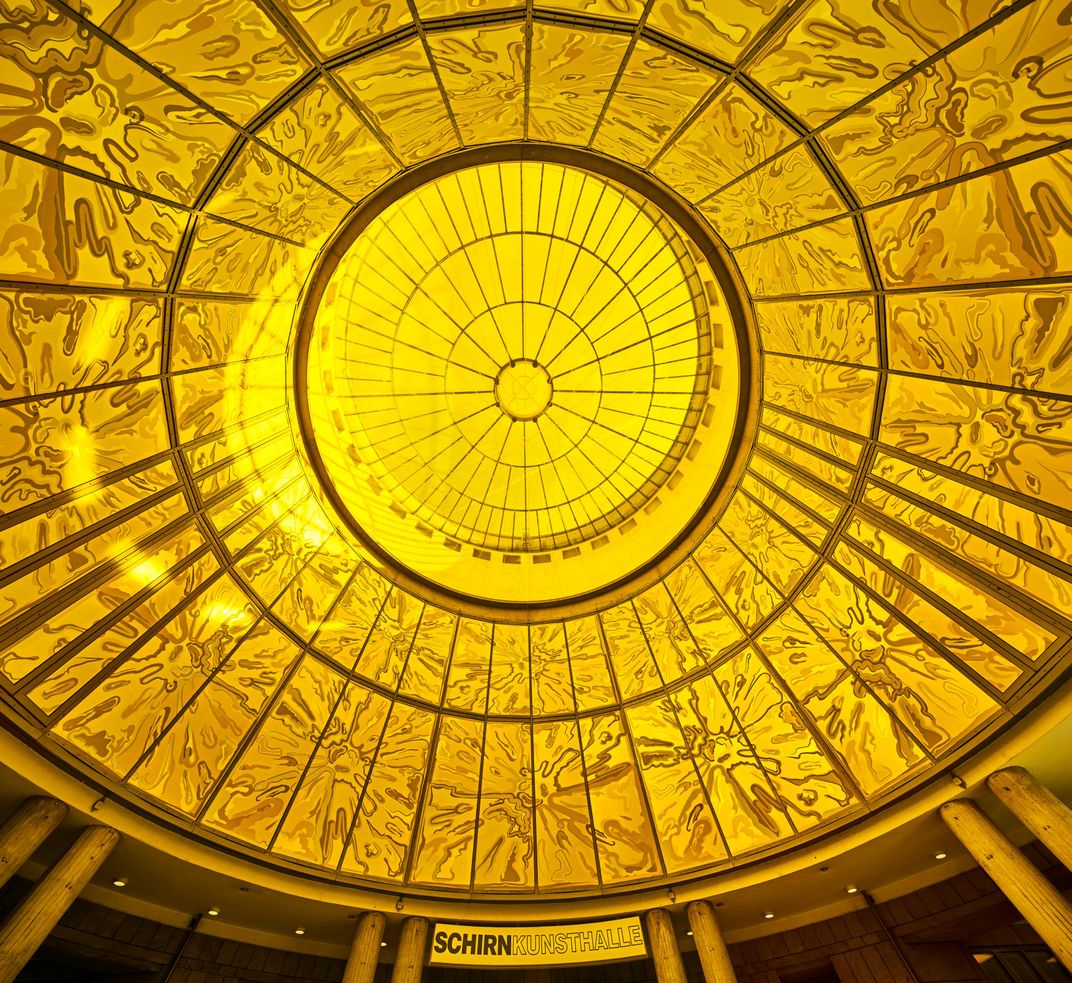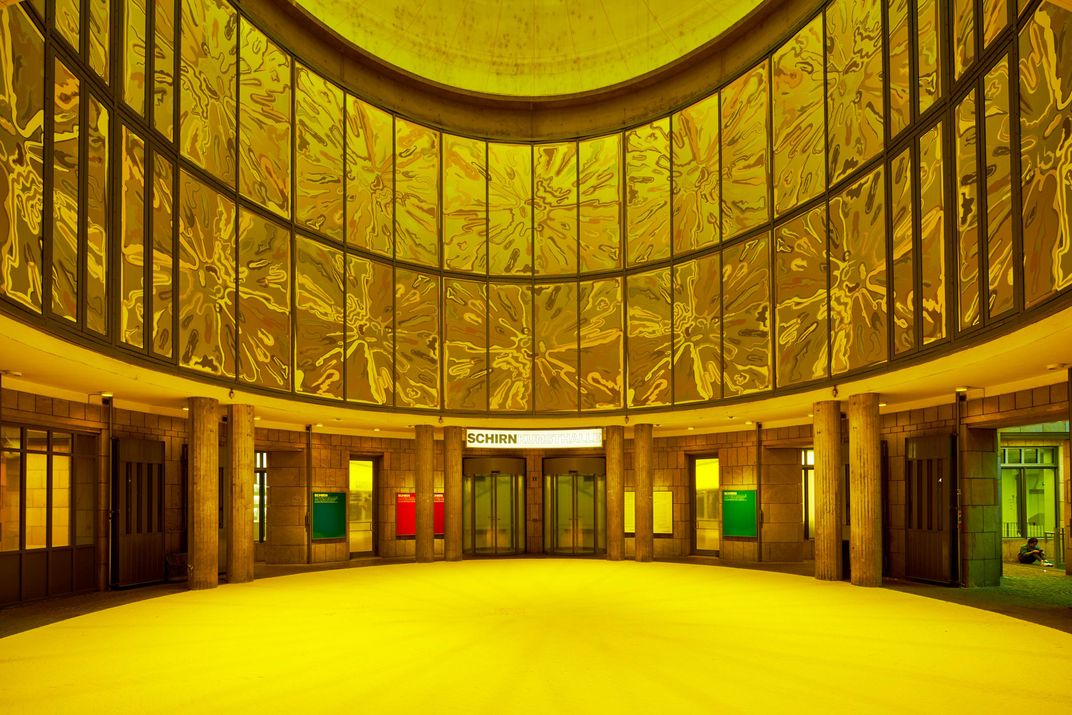Wander About an Art Installation Inspired by the Large Hadron Collider
Art from science
The Large Hadron Collider (LHC) at the European Center for Nuclear Research (CERN) is one of the world’s most powerful and sensitive research tools. The LHC recently switched back on to run new experiments that scientists hope will yield new discoveries like the 2012 discovery of the Higgs-Boson particle. But while the LHC is pushing the bounds of how physicists see the universe, it is also a source of inspiration for science-minded artists around the world. Now, a German museum has teamed with an artist to transform a massive building into an art installation inspired by the LHC.
Peter Halley, an American artist known for his fluorescent-colored paintings of geometric shapes, has taken over a 5,000-square-foot rotunda at Frankfurt’s Schirn Kunsthalle exhibition hall for an enormous installation called “The Schirn Ring.” Inspired by the geometric forms of the space and the fact that “Schirn” rhymes with “CERN,” Halley has covered the space in his signature geometric forms and Day-Glo colors to highlight the rotunda’s architecture, Jamie Condliffe writes for Gizmodo.
Halley was not only inspired by the rotunda itself, but its location in Frankfurt and its position in relation to the historic buildings around it.
As the Schirn Kunsthalle writes in a statement:
The development of The Schirn Ring was preceded by an intensive study of the architectural and conceptual context of the Schirn Rotunda. Halley sees the architecture of the Rotunda as loaded with cultural associations: the Rotunda’s form echoes that of the nearby historical, Neo-classical [St. Paul’s Church]. At the same time, it is on axis with the adjacent [Frankfurt Cathedral]. From there, Halley went on to explore analogous elements in the architecture of the Schirn Rotunda and the design of the CERN Large Hadron Collider in Geneva.
The exhibition also has some subtle secrets built into the intricate lattice-like designs Halley used to cover its walls. Blacklights positioned throughout parts of the rotunda reveal paintings of the Hindu goddess Shiva, a statue of whom sits at the entrance to CERN’s facilities, Michael Hierholzer writes for the Frankfurter Allgemeine Zeitung.
A lower gallery is covered in physics formulas, while a colored skylight in the ceiling bathes the rotunda in yellow light as if “the Rotunda itself as a high-energy collider full of explosive energy,” the Schirn Kunsthalle writes.
CERN may be home to some of the brightest scientists in the world, but for the last five years, the research center has hosted artists-in-residence. Every year, CERN awards several artists fellowships to come stay at the research center and collaborate with its researchers on science-inspired artworks. In the past, artists have created sound sculptures and dances, based on everything from the equipment that makes the LHC run to the physics theories CERN’s scientists explore every day.
The Schirn Ring is open to the public until August 21.
